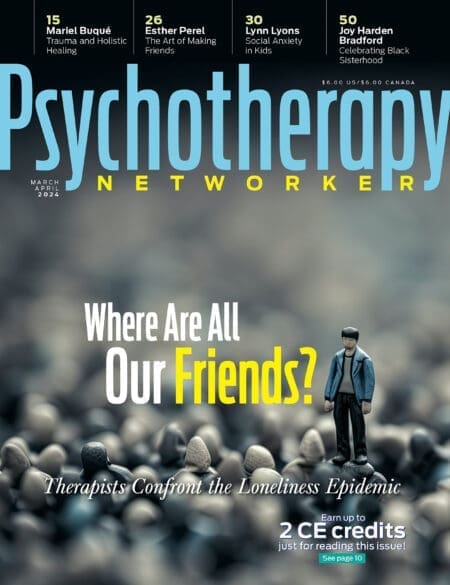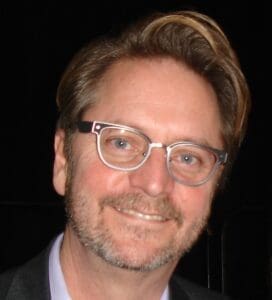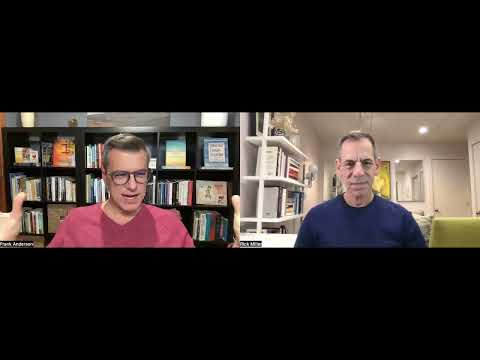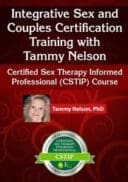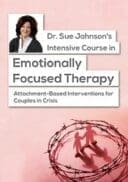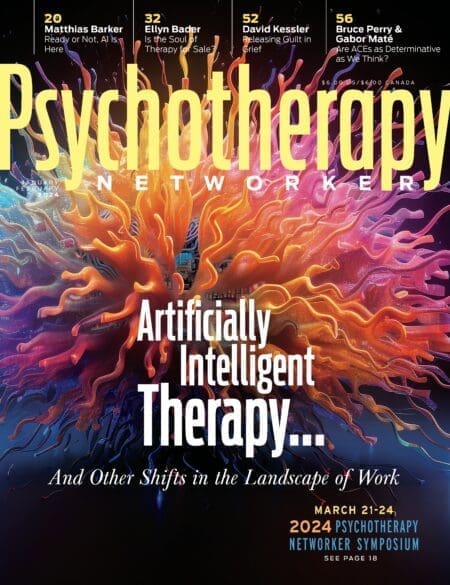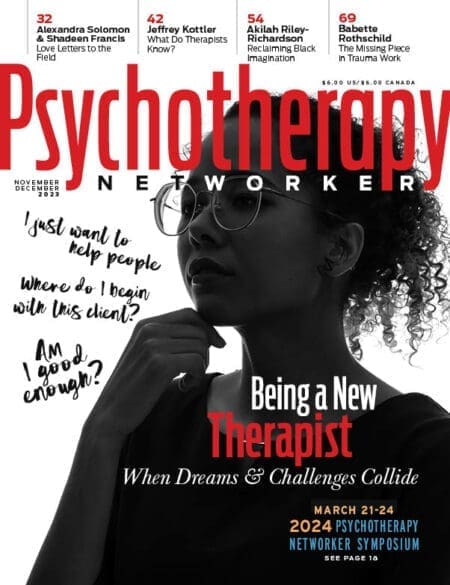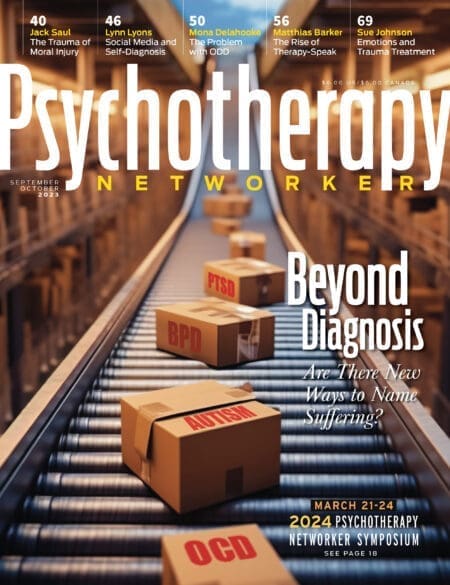Children are supposed to outlive their parents. No one says as much until the unspeakable happens—then everyone says it. At least that’s what Abagail found as people shuffled past the light blue, steel casket containing the body of her daughter, Lizzy. For 18 years, Abagail had devoted herself to not just taking care of Lizzy, but giving her a life. Her loss was devastating.
Shortly after her birth, it was clear something was wrong. Lizzy’s body would alternately stiffen, jerk, and go floppy. She didn’t eat right and was often impossible to soothe. As the months passed, she missed key developmental milestones. She couldn’t lift her head or roll over on her own. Seizures began, and eventually a grim diagnosis was made: severe cerebral palsy.
Lizzy would never speak, walk, feed herself, or control basic bodily functions, and doctors questioned how much she understood of what was said. But despite these realities, in many respects, her life was like that of any other American kid. Abagail saw to that. She insisted that Lizzy attend classes with children her own age, and Lizzy’s teachers and classmates made sure she wasn’t excluded from any activity. “No grass grew under her feet,” Abagail recalled with a laugh when we spoke with her. “We went everywhere with her chair and the van. At my parents’ summer home, she loved to be out in the sun and ride in the boat.”
Life went on. There were scares every so often—a corrective surgery here, an infection there. But then came the crash. Within a week, Lizzy’s organs began to fail, and nothing her doctors did made any difference. Her death left Abagail with the kind of deep grief and sense of emptiness that one would expect in her circumstance. Still, her commitment to her daughter was indefatigable. She had no doubt that Lizzy’s spirit lived on, and her biggest worry was that no one was looking after her daughter now. “I took care of her for 18 years, and she had lots of needs,” Abagail said. “I wanted to know, needed to know where she was, if she was okay.”
When Abagail’s anxieties failed to lessen with time, she sought out a therapist. She’d seen one shortly after Lizzy’s birth. “That first time was quite helpful,” Abagail remembered. “She really listened to me, understood my situation. I got some helpful advice and appreciated the honesty and directness. I decided to go again.” But her experience this time, with a new counselor, couldn’t have been more different. “I stopped going after a few visits,” Abagail told us. “It was clear this person had no idea what to say to me. I’d be talking about what, for me, were minor things about Lizzy and her life. But the therapist would start tearing up, talking about how difficult it all must’ve been. It stopped me in my tracks. There was so much worse stuff I felt I couldn’t even share with her. I guess you could say that I felt like I had to take care of her.”
A few months passed and Abagail tried therapy once more. This therapist listened and was friendly enough. In time, however, the process started going sideways. “He gave me a book with these exercises, these guided meditations that were supposed to help me accept Lizzy’s death,” Abagail recalled, her voice betraying frustration. “I argued with him. I just couldn’t understand why he was asking me to do them. I didn’t have a problem accepting her death. I’d lived with that possibility her entire life.”
Even a visit with her parish priest failed to resolve Abagail’s concerns. She simply couldn’t muster the faith he counseled her to embrace. When it came to Lizzy’s welfare, she didn’t want to believe; she wanted to know. “I didn’t need someone to validate my feelings, help me ‘work through’ my grief, or tell me to trust in God,” she said stridently. “I wanted proof she was all right, that someone was there to help her.”
And proof Abagail received, except it didn’t come from science or religion, or their agents. It started with a referral from a friend to a “spiritual advisor,” a woman believed by many to possess a remarkable gift: the ability to communicate with the dead. Abagail recalled, “As soon as Madeline greeted me, she asked, ‘Are you here to talk about your daughter?’ I was floored. I’d shared nothing with her beforehand. Nothing at all. That’s when I knew I was in the right place. ‘Yes,’ I said.”
Abagail and Madeline then sat opposite one another, a small table to the side, not unlike in a therapist’s office. “‘Your daughter’s passed over,’ Madeline continued. ‘It’s been a hard time for you and your family. You have questions.’” Abagail had nodded, watching as the advisor’s face underwent a transformation. “It was a look of pure joy . . . connecting, seeing something,” she remembered, reliving the moment. “‘Lizzy is stepping forward,’ Madeline told me. What a rush. It was what I’d wanted, been waiting for! I can hardly describe it—happy, excited, scared. Then Madeline said, ‘She knows you’re worried and wants to reassure you. She’s alright. Yes, she’s OK.’”
Over the next 40 minutes, Madeline continued to speak of Lizzy. She was no longer in a wheelchair. She was taking her first steps, feeding herself, and learning to speak. All that had been impossible in her mortal life was now open to her. And she wasn’t alone. “I can see an older couple,” Madeline told Abagail. “He’s balding, and she’s wearing glasses. Lizzy says they’re helping her. Do you know who they are?” Abagail knew instantly. They were Lizzy’s great-grandparents.
“Looking back on it now,” Abagail said, tearing up, “that’s when I knew Lizzy was alright. Someone was there. She wasn’t alone. It was such a relief. I can’t tell you.”
Over the next year, Abagail met with Madeline a few more times. Contact was made and news of Lizzy shared—always positive and encouraging. Each time, however, the connection was both harder to establish and briefer in duration. Through Madeline, Lizzy reported that the visits were increasingly difficult for her. She was busy growing up and taking on new challenges. During what would be the final meeting, Lizzy gently scolded, “Stop worrying about me, Mom. When you don’t move on, I can’t either.” That was it. “Sure, it’s still very hard,” Abagail relayed. “But Lizzy was right. To really support her, I had to get out of her way. And that’s what I’ve done. I’ve been moving on.”
A Bridge Too Far?
No matter what one makes of Abagail’s experience with Madeline, it’s hardly unusual. Accounts of consulting psychics and mediums date back thousands of years, as do attempts to communicate with the dead, seek divine guidance, or see into the future. According to the American Federation of Certified Psychics and Mediums, millions of people in the United States regularly seek counsel from advisors claiming special powers. The available industry data indicate more people attend and pay out of pocket for such services than see mental health practitioners. Indeed, while the rest of the US economy was reeling from the Great Recession, an independent analysis reported in Business Insider showed that use of psychic services grew annually by 3.4 percent, grossing more than two billion dollars between 2007 and 2012.
How could this be? How could psychics and mediums be flourishing at the same time the fortunes of mental health professionals—those trained and sanctioned to care for people burdened with emotional pain and suffering—are flagging? The facts are sobering. In its long history, the field has never had mass appeal, and doesn’t now. Epidemiological studies consistently show, for example, most people who could benefit from seeing a therapist don’t go to one. And nowadays, fewer people are turning to psychotherapy: 33 percent fewer than did 20 years ago, with most never returning after the first appointment. Not surprisingly, research gathered by the American Psychological Association documents that practitioner incomes have been in marked decline over the same period.
As researchers and authors, we didn’t set out to study psychics or their financial success. Far from it. Like many within and outside the profession, we viewed that industry and everyone in it with considerable skepticism and prejudice. Our interest came about indirectly. For more than a decade, as part of our work with the International Center for Clinical Excellence (ICCE), we’d been studying top-performing clinicians, highly effective therapists who’ve come to be called supershrinks—a group qualitatively and quantitatively different from the rest.
The field has long known the therapist’s personal presence is more important than whatever treatment is provided. A fundamental finding of our research on this topic is that superior performance isn’t a function of degrees earned, title, age, experience, or gender. One of the defining characteristics of supershrinks is that they establish effective relationships with a broader and more diverse clientele than their average counterparts, engendering strong feelings of being heard and understood, no matter who they meet with. We had no idea how they did this, and conventional wisdom, even the professional literature, couldn’t explain their capabilities. Of course, knowing and using the Rogerian core conditions might shed light on how a therapist could achieve proficiency, but that didn’t bridge to superior performance.
Unable to account for the success of top-performing clinicians, we returned to the literature on expertise, where previously we’d learned common processes and practices underlie the development of expert performance across a wide range of pursuits. In so doing, we hoped to find clues to the success of supershrinks by investigating other disciplines in which engagement plays a central role in effectiveness. Among the many possibilities—such as sales, marketing, management, medicine—one specialty immediately stood out: a group of entertainers known as mentalists, whose work is characterized by the ability to create an experience of intimacy and understanding, often within seconds of meeting. Not surprisingly, their apparent superior intuitive powers lead many to call them mind readers. For us, studying mentalists was hands down our first choice. Their work was evocative and dramatic, and closely allied with what many clients believe therapists are capable of doing.
Gaining access to the mentalist community proved more difficult than we anticipated. It’s an exclusive, close-knit group, highly protective of each other and their methods. So we were pleased to learn, after much investigation, that one of the most respected members of this guild lived in Chicago, the same city as Scott. Eventually, with considerable persistence, we made contact and invited him to come and speak about his work with members of the ICCE, letting him know that we were interested in learning to “read minds,” too. He flatly refused to talk with our group, offering only to meet one on one—which is how the mentalist who’d become our mentor in this pursuit came to visit Scott at his home on a sunny Thursday afternoon.
After the briefest of introductions, the man, indistinguishable from anyone walking on any city street, asked Scott, “Do you believe in the paranormal?” When Scott replied no, the man reached into his coat pocket and produced a tarot deck. After shuffling the cards, he set them on the table and asked they be cut into four piles. From each, the top cards were removed and placed side by side in a row. “Ever had your cards read?” he asked. Once again, “No.” What the mentalist shared at this point, although we won’t go into the deeply personal content, contained a breadth and level of detail known only to Scott or his immediate family.
At first, Scott found himself shocked by the experience, and perhaps a bit disturbed. But once this initial reaction subsided, it was replaced with a sense of intense curiosity and excitement. How did he do it? How did this man know so much, given that they’d never met before? Moreover, could knowing the way he went about creating such a profound feeling of familiarity and closeness provide insight into the performance of supershrinks? And could whatever knowledge gained be used to help more therapists achieve better outcomes, more of the time? As it turns out, Scott’s meeting with the mentalist sent us into new and uncharted territory, taking our work and research in a direction we’d never anticipated.
Returning to Our Roots
We spent the next few months, without success, putting considerable effort into extracting the “secret” doings behind the mentalist’s work. We read books and papers, interviewed our teacher over and over, even practiced reading tarot cards with his supervision. Despite significant investments of time and money, our own efforts to match or approximate his abilities remained amateurish at best.
One day, noting our frustration, he said, quoting Shakespeare, “There are more things in heaven and earth than are dreamt of in your philosophy.” He continued, “Psychotherapy may have abandoned magick long ago, but people never have. At the deepest level, they believe . . . and want to believe.” With that, he looked at us expectantly, as though he’d just given us the keys to the kingdom.
Although we didn’t realize in the moment, he was right. Even the most perfunctory examination of the history of healing—across all cultures—reveals that it was once infused with wonder and mystery. Maladies of the body, heart, and soul were thought to result from the actions of otherworldly forces. Relief, recovery, and a return to health required the intercession of one who could move between the physical and supernatural realms. The success of the “treatments” depended on gaining access to powers inaccessible in the natural world. Ceremonies elaborated in songs, prayers, chanting, dancing, and awe-inspiring demonstrations of power were used to invite spirits, gain their permission and cooperation, and enlist their healing energies. All this occurred in a social context strongly supportive of the beliefs and related practices. The healer, the afflicted, and the community were engaged in a common purpose.
Even in today’s modern times, surveys published by David Moore in 2005 and the Pew Research Center in 2009 consistently show most adults in Western cultures entertain magical beliefs—described as “any phenomenon that in one or more respects exceeds the limits of what is deemed physically possible according to current scientific assumptions.” Extrasensory perception ranks number one, followed by mediumship, haunted houses, ghosts, telepathy, clairvoyance, astrology, witches, and channeling. According to research that Christopher French and Anna Stone reported in their book Anomolistic Psychology, the most common reason given for belief in the otherworldly is personal experience. And as it turns out, more people are seeing ghosts than ever before. An even greater number of people, like Abagail, claim to have been in touch with someone who’s died. In fact, supernatural beliefs and experiences of all kinds are on the rise. The present generation is twice as likely to accept the supernatural as true and real than the previous one.
Once traditional religions are added to the mix of what’s strictly defined as supernatural, the ranks of believers approach 100 percent. Nearly all faiths include, as tenets of belief, events that violate accepted laws of science—the very definition of magick, in the occult sense, not the performance kind often seen in Las Vegas. Within the Judeo-Christian tradition alone, the sun is made to stand still, a man survives in the belly of a whale, water is turned into wine, minuscule amounts of food feed multitudes, the grievously sick are healed, and the dead return to life. The latest Gallup poll shows 92 percent of Americans believe God exists and possesses the power to bring about such miracles, with nearly 70 percent reporting they’re either moderately or very religious.
By contrast, this worldview, which dominated healing for millennia, has been rooted out of psychotherapy in favor of scientifically sanctioned interventions. Among today’s informed practitioners, thoughts, behavior, emotions, and brain chemistry reign supreme, having supplanted, even vanquished, the miraculous and ineffable. All aspects of the care they provide, from intake to termination, are explained in the preferred, materialistic language of today. No longer beings of light and darkness, energy and spirit, people are reduced to biopsychosocial objects or entities.
To our mentalist mentor, abandoning magick for science was nothing less than a Faustian bargain. Whatever benefits the field and its practitioners believed they received in the deal, the cost came in a diminished ability to enchant and an enfeebled power to heal. Surveys conducted by the American Psychological Association, Psychology Today, and others prove him right. When people are asked why they chose not to see a therapist, nearly 80 percent report a lack of confidence in the outcome of treatment. If that weren’t enough, our own published reviews show—despite the proliferation of approaches, the rise of empirically supported therapies, and the invocation of brain-based explanations—the overall effectiveness of psychologically informed treatments hasn’t budged a single percentage point in more than 40 years.
But what does magick have to do with any of this? What was our teacher saying? Go backward in time? Give up science and critical reasoning and embrace superstition, the arcane, even the occult? That’s when it hit us. If superstition or magical thinking is, as it’s commonly defined, “the fallacious attribution of causal relationships between actions and events,” then, whether anyone likes it or not, psychotherapists are, and always have been, practicing magick. We’re sure for many readers this will incite skepticism, if not abject rejection. In truth, we’d never thought of what we do as clinicians in this way either.
That psychotherapy is a healing art, and works for many people, was never in question. What’s bereft of scientific support is the common belief that our models, and their associated methods, accurately capture how change happens or contain ingredients that are inherently curative. To this point, following an exhaustive review of the literature, uber-researcher Bruce Wampold concluded, “Decades of psychotherapy research have failed to find a scintilla of evidence that any specific ingredient is necessary for therapeutic change.” If this is true, then transference interpretations, exposure to feared stimuli, confrontation of dysfunctional beliefs (or feelings), initiation of saccadic eye movements, diagnostic formulations, treatment planning, manuals, protocols, and so on—all the procedures currently in vogue—are the modern equivalents of magickal premises and practices understood and used by healers for millennia.
“The real problem,” our teacher said, referencing Alice’s Adventures in Wonderland, “is everyone refuses to believe in magic.” At the time, we didn’t realize he was talking to us, about us. But indeed, we were the poster children for the scientific practice of psychotherapy, having enjoyed long careers of separating fact from fiction. Data was our deity. Though we accepted the role of belief in psychological healing, the idea that magick was the very bedrock of our work was inconceivable. And yet, that’s what our mentor seemed to be saying. What’s more, we were trapped, blinded to the many possibilities for healing that a strictly materialistic frame of reference and a worship of empiricism doesn’t permit.
What this all meant in terms of therapeutic excellence wasn’t entirely clear to us, and initially this foray caused us a certain amount of anxiety. We worried about what our colleagues would think. Had we gone soft in the head? Fallen prey to some charismatic kook? Joined a cult? Further, even if we survived the embarrassment of being discredited, what possible guidance would we have for improving the appeal and effectiveness of psychotherapy? Should we all take lessons in mediumship? Burn incense and read tea leaves? Build a sweat lodge in our backyard? Chant, pray, and prescribe medicinal herbs?
Ultimately, a leap of faith was required, and we took comfort in the fact we weren’t alone. We’d be connecting with a new, and larger, family of healers—a community around the world that never left magick behind, that remains deeply engaged in the beliefs of those they treat, and uses whatever means necessary, consistent with those beliefs, that result in change. There was no going back now. How could we return to a worldview that was neither advancing the practice of psychotherapy, nor reversing its decline? The facts are incontrovertible: outcomes are stagnant, and people aren’t buying what we’re selling. Simply put, what the field offers is unconvincing. As Abagail’s story attests, for many, psychotherapy doesn’t “sing to the soul.”
The Three Processes
At this stage in the evolution of our thinking, we’ve identified three distinct processes, each progressively more demanding, for reuniting psychotherapy with its true magickal roots: exploring, entering, and embodying. In some important ways, practitioners are already doing some of this work, but other aspects will undoubtedly prove more challenging, requiring a radical shift in the way psychotherapy is conceived and performed.
Exploration. Of the three processes, exploration will be the most familiar to practitioners. It’s what we do when we ask things like What brings you here? How is that a problem? Can you tell me about yourself? Beyond these general inquiries, our field has recognized the necessity of being both aware of and sensitive to the range of human diversity—how culture, race, socioeconomic status, and other factors can affect the conduct of psychotherapy and its outcomes. Multicultural competence, as it’s come to be known, is now a routine part of graduate and continuing education. Since 1974, it’s been considered an ethical imperative, and from the outset, the criteria for cultural competence have included spiritual and religious beliefs and practices, regarded as key aspects of human diversity, equivalent in importance to race, ethnicity, gender, and sexual orientation.
Surveys consistently show most people believe religion and spirituality are important and appropriate topics for psychotherapy. In fact, most clients welcome questions and want to discuss their beliefs, viewing them as an integral part of their treatment experience. When therapists are open to exploring clients’ religious and spiritual beliefs, good results follow. Meta-analytic studies show, for example, clients who perceive their therapist to be aware and respectful of their culture’s beliefs, values, and traditions are more satisfied, experience stronger therapeutic alliances, view the therapy as both more powerful and valuable, and have better outcomes.
Entering. Recalling Abagail’s multiple encounters with therapy, it’s clear that no matter how willing a clinician may be to explore a client’s worldview, for many it won’t be enough. As Dorothy Holmes, professor emeritus at George Washington University, observed in the Spring 2012 issue of The National Register, “The current training models, while necessary and useful, are insufficient, [targeted] only at the surface of cultural factors that may emerge in treatment . . . conscious, rational, and manifest factors that are easily grasped intellectually, but are not deeply integrated emotionally.” With regard to the myriad aspects of human diversity—including spirituality, religion, and belief in the supernatural—that means moving beyond mere interest or acquaintance. Clinicians will need to enter—or be in—the client’s reality, actively working to increase the fit between their preferred way of working and the client’s belief system. How does this work?
When Owen, a therapist at a community mental health center, first met with his new client, the man wasted no words. “I’m a sinner,” Noah said flatly. “I’m on the outs with God.” He paused, looking down, slowly turning an amber-colored bottle around in his hands. “And this is what I get?” he asked, rattling the pills will little conviction.
Noah went on to explain that two years earlier, he’d lost his management position with a local manufacturer—a fate many shared in the last economic downturn. For a while, he had faith he’d soon find work. He was well connected in the local community and had many friends, as well as the support of his church congregation. However, as time dragged on, he became more discouraged. When church members rallied to his support, offering food and even some temporary work, at first he accepted. But in time, that too would change. “It was the Christian thing to do, helping me out and all,” Noah observed, then quoting the Bible, he added, “First Timothy says, ‘If any provide not for his own, especially for those of his own house, he hath denied the faith and is worse than an infidel.’ So, I told ’em to stop. We’d get by, somehow. Lord willing, I’d find some way to take care of my own.”
But with no money coming in, and no savings left, the family home went into foreclosure. Refusing even to consider applying for government benefits, Noah, his wife, and two children were forced to move in with his in-laws—a development that deepened his feelings of shame and despair. “Last week, I came home and Doc Eason was sitting there in the front room with my father-in-law. ‘You’re going to talk to the doctor,’ he told me. And that’s how I got this . . . medicine,” Noah spat, with undisguised sarcasm.
Owen listened intently as Noah spoke. An intake session the prior week had pushed him to the front of the line at the busy community mental health center. Like Noah’s family, the interviewer was concerned. But Owen was struck by the sharp contrast between Noah’s mood and grooming. His hair was clean and combed, and he wore a neatly pressed, button-down oxford shirt, and creased khaki pants. Here’s a man who hasn’t given up completely, Owen thought. He’s well-spoken and takes pride in his appearance.
“Your father-in-law, your wife,” Owen started, “they care about you.”
Noah interrupted, his voice rising, “They’d be better off without me. They’ve got all they need. The old man is doing a better job than I am.”
Owen paused, recalling the concluding section of the intake report: heightened suicide risk. Nevertheless, the pressing concern at the moment was finding some way to connect with Noah, to engage him in a therapeutic relationship. Having grown up in the area, Owen knew the community and was familiar with Noah’s conservative Christian church. He also knew they mistrusted mental health professionals, fearing they’d be misunderstood or their beliefs pathologized. That Noah had showed for two appointments—one with the interview and now with Owen—truly surprised him. Clearly, both he and his family were desperate.
Owen’s experience told him he’d need to choose his words carefully, to make sure Noah didn’t view him as an outsider. He reasoned that unconditional positive regard was out. After all, if God couldn’t accept Noah, how could he presume to do so? Instead, he’d have to find a way to enter his client’s reality, to respect and work within Noah’s assumptive world. Resuming the conversation, he said, “Being here with you, and listening to what you’ve been through, I can’t help but think, you’ve been thrown to the lions.”
“Yes, well, huh,” Noah said, snickering cynically. “Except, I’m not Daniel. God has abandoned me.”
“I can see why you’d say that,” Owen replied, “given everything that’s happened, or hasn’t been happening for you.”
Unexpectedly, tears sprung to Noah’s eyes. A simple request to say more led him to recount the many ways he felt estranged from God. It was easy to feel sympathetic. Noah was a hard-working man who was devoted to his wife, children, and church. When someone was in need, he was there, an active and respected member of the community. Then came the fall, after which nothing seemed to go his way. “I’ve prayed till I can’t pray anymore, but He’s not talking,” Noah exclaimed. “I’m being punished, but for what? I don’t know.”
The two men sat in silence. Owen sensed a shift in his client’s demeanor, from distant and angry to more open and vulnerable. Here was a chance to enter—to demonstrate that he understood and, at the same time, could do something to help. Under the pressure of both mood and circumstance, Noah’s thinking, Owen sensed, had become highly constricted: he’d permit no other conclusions or possibilities except that he’d fallen out with God. Trained in cognitive behavioral therapy (CBT), Owen believed that this conviction was at the core of Noah’s depression and inability to take constructive action. To help his client move forward, Owen decided to use two central principles of Christian theology—pride and grace—to challenge Noah’s dysfunctional thoughts.
“Let’s look at this together,” Owen began, “You believe you’ve lost God’s favor? But from where I sit, it strikes me that it’s your thinking that’s brought you to this place and keeps you mired in it.”
“What? What do you mean?” Noah asked, looking at once confused and irritated.
“You are in the lion’s den. No question,” Owen responded, his tone soft and affirming, “But it’s your thinking that leads you to conclude you’re alone there, that you’ve been forsaken and are being punished, when everything else in your life says otherwise. “Noah looked stunned. “So I think it’s worth considering that the real culprit behind all this is pride.”
“Pride?” Noah asked, leaning forward.
“Yes, the error of false pride. From what you’ve been telling me, it’s blinded you, closed your heart, but most of all it’s led you to refuse God’s grace,” Owen said.
“I guess I’m lost then,” Noah whispered.
“That’s it! Right there,” Owen broke in. “What you said just now is a prime example of how your thinking gets in the way, and ultimately comes between you and your Heavenly Father. Stay with me here. When you were hungry, you were fed. When you had no place to sleep, a home was provided. When you despaired, help appeared. The problem is you won’t see it. You even refuse it.”
With that, Noah sat up, stiffening. Anger flashed in his eyes. But then his shoulders slumped as something inside him seemed to loosen. “Maybe you’re right,” he admitted. What followed was a kind of confession about his current challenges, accentuated by passionate expressions of both grief and gratitude. As Owen listened, he reframed Noah’s words and experiences in the language of cognitive therapy, highlighting how thoughts impact mood and behavior. As the session drew to a close, he suggested Noah keep a journal in which he’d document any instance of self-defeating, prideful thinking. Additionally, whenever tempted to surrender to such thoughts, he was to counter with an expression of appreciation or thankfulness, either in prayer or directly to those around him.
In the visits that followed, Noah and Owen continued to discuss the times in which he felt tempted to ignore “God’s grace” and succumb to what he now referred to as his “prideful ways.”
“Accepting help from others is the hardest,” Noah shared. “I have to remind myself that it’s a blessing, and I need to be grateful and give back in return, even if right now it’s just a handshake and a thank-you.” Not too long after this admission, he accepted a position as the church groundskeeper.
Although it was a significant step down in both pay and prestige from his prior job, Noah threw himself into the work. At one point, in front of the entire congregation, he publicly acknowledged his struggle with depression, thanking the members for helping him grow in his faith. After six visits, therapy ended with the understanding that Noah was always welcome to return. The last time the two spoke was over the phone, and Noah was joyous. “A miracle has occurred,” he relayed excitedly. “The old plant has been bought. They’re calling back many of the employees and managers for interviews, and I’ve been hired!”
Of course, paying attention to client values and using them in the service of change will be familiar to many therapists. As far back as 1954, the celebrated psychiatrist Milton Erickson observed, “The purpose and procedures of psychotherapy should involve the acceptance of what the patient represents and presents. These should be utilized to give the patient impetus and momentum so as to make his present and future become absorbing, constructive, and satisfying.” The approach, termed utilization, can range from the simple use of a client’s words, expressions, or idioms in conversation to being the central focus of treatment. In one famous case, Erickson worked with a person who was convinced he was Jesus Christ, and he made no attempt to persuade the man he was anyone other than the Messiah. Instead, Erickson put him to work as a carpenter. Reportedly, this longtime inmate of a psychiatric hospital improved dramatically, eventually gaining employment as a handyman.
More recently, professional organizations have elevated the practice of utilization to a standard of care. Official definitions of evidence-based practice mandate that services be informed by and organized around an individual’s background and personal characteristics. To this end, manualized approaches have been and continue to be developed, offering detailed guidelines for modifying services to fit the client’s internal and interpersonal worlds. At present, the evidence confirms such adjustments can result in better outcomes.
But making such accommodations—a practice now known in the literature as dynamic sizing—is easier said than done. In truth, it’s much like threading a needle, the challenge being to promote engagement while avoiding stereotyping. Beyond losing sight of individual differences, the sheer number of possible adaptations can quickly become unmanageable. To illustrate, in a course of psychotherapy, where a clinician considers making adjustments along only 4 of 13 potential cultural dimensions (e.g., race, ethnicity, gender, sexual orientation), mathematical formulas for calculating combinations tell us there’s a total of 715 different ways to nuance service delivery results. Obviously, any standard of care that requires clinicians to juggle so many variables is both absurd and out of touch with research showing people are incapable of multitasking. Even if it were possible, another serious problem would remain: any accommodation, no matter how well intentioned or comprehensive, risks being nothing more than window dressing, or the proverbial “spoonful of sugar” that makes the therapist’s “medicine” more palatable.
Returning to Noah’s therapy, Owen made no change whatsoever to the CBT protocol. Instead, he added religious language and doctrines to make the unfamiliar familiar, help persuade Noah to enter treatment and stay, and ultimately be receptive to Owen’s preferred ways of working. For Noah, this form of entering was enough. For many others, including Abagail, it won’t be. If therapists ever hope to connect with this larger group, the field’s ways of working and foundation on which it rests must change. Beyond accommodation or utilization, clinicians will have to embody what the majority plainly yearn for and desire—the existence of something more, a realm of possibilities for healing and change unbound by convention and traditional science.

Embodiment. The role of magick in physical and psychological healing is staging a comeback. A 2016 article by Benedict Carey in the New York Times reported that the governments of the world’s two most populous countries—India and China—were calling upon folk healers, herbalists, and spiritual guides to address the pressing mental health needs of their citizenry. Rather than being dismissed as unscientific and superstitious, or being told to wait until their methods can be tested in randomized controlled trials, these indigenous practitioners are encouraged to apply their arts, including invoking the intervention of helpful spirits, prescribing magic rituals and healing botanicals, and bringing messages from ancestors to the living. Popularity and satisfaction rates are high among users, and large numbers of people who’d otherwise go untreated are being served. Though still in its earliest stages, research is quite favorable, documenting improvement in conditions, such as schizophrenia, which would be labeled severe in these countries.
Meanwhile, in Western societies, the use of magick by professionals occurs mostly behind closed doors. Crystals, incense, drumming, prayer, chanting, breath exercises, the “laying on of hands,” tarot cards—a whole panoply of possibilities beyond talk—are being employed in the service of healing. The emerging energy-based therapies are one prominent exception, with their proponents quite open and vocal about their beliefs and methods. A major tenet of this movement is that a subtle life-force energy—incapable of being seen or directly measured—pervades all living organisms. When it’s out of balance, illness results. Practitioners use a variety of hands-on (e.g., touching, tapping, vibration, sound) and hands-off methods (e.g., prayer, positive visualization, telepathy) to channel, rebalance, or unblock these vital forces.
Skeptics and research scientists alike are positively apoplectic over the lack of evidence for the existence of energy fields, much less the ability to affect them in the service of healing. And yet a 2016 meta-analysis of 20 studies by Jerrod Nelms and Liana Castel found that the approaches work. Anyone familiar with psychotherapy outcome research won’t find these results that surprising. Of course they work. Everything works! Without exception, every psychotherapy approach tested over the last 50 years works. But however the methods are believed to work—whether by the operation of spirits, the rebalancing of disharmonious energies, the movement of invisible magnetic fluid, control over automatic thoughts or other mischief in the unconscious—each approach shares a common denominator: the conviction that forces outside awareness, inaccessible to reason or direct observation, influence or even control life.
Cognitive scientist Bruce Hood has termed this phenomenon the supersense, defining it as “beliefs and experiences that lead us to infer hidden structures, patterns, energies, and dimension to reality.” This decidedly unscientific, nonmaterialistic perspective isn’t the product of primitive instincts, internal psychological conflicts, or childlike wish fulfillment. Rather, it’s part and parcel of what it means to be human, imbuing life with connection, order, even sacredness. Crucially, those viewed by the public as possessing the power to connect with the supersense, and direct the forces within, are regarded as healers.
Understanding the supersense, and the role it plays in the human experience, opens the door to possibilities for healing far beyond what the current and popular schools of thought defining psychotherapy would ever allow. In Abagail’s case, it meant finding someone who could speak to her dead daughter. The only limitation is what we and our clients stand ready to believe and are prepared to do.

In a conversation, psychologist Paul Leslie, author of Low Country Shamanism, offered some good counsel about embodying magick in clinical work. “Dive in,” he advised therapists. “Embrace what your clients believe and know. Breathe life into the magickal beliefs and spiritual traditions from your own home, family, and culture—all that came before, and all that make you who you are and what you can become. And then, if needs be, look beyond.”
Years earlier, Paul had moved from a major urban area in Florida to the South Carolina Lowcountry to accept a position as a psychology instructor at a small community college. “Of all the places I expected to live in my life, South Carolina wasn’t one of them. It’s not that I had anything against the state. I just didn’t know much about it,” he said.
Not too long after, while attending a peer supervision meeting, a fellow therapist brought up her work with a young man suffering from severe anxiety. So far, her efforts to help had proven useless. According to the client, the reason was clear: someone had “put the root on him.” Paul had no idea what this meant. “It’s hoodoo,” the counselor explained, “a type of conjuring, a cousin to voodoo, but specific to this area.”
Paul remembers thinking to himself, This is silly. People really believe this? The whole subject probably would’ve ended there, were it not for an event that took place a couple months later. Paul and his wife, returning from a long weekend in Savannah, were discussing a ghost tour they’d taken the evening before. The subject of hoodoo came up. “Like ghosts,” he remarked, “it’d take a lot to convince me that this stuff is real.” Right then, a car slowly passed by. Looking over, he caught a glimpse of the license plate, and a shock went through him. It read, “MAGICK.” The couple laughed at the synchronicity. “But it stuck with me,” he explained. “I took it as a sign to look deeper into the subject.”
An internet search provided some basic information as well as the names of self-proclaimed hoodoo masters, but most of them turned out to know little and were chiefly involved in peddling tricks to the unsuspecting. “Just as I was about to write the whole business off as an oddity from a bygone era,” Paul recounted, “it happened again, another brush with the uncanny.” He was meeting with a professor known for being a conservative and deeply rational thinker. The two were discussing local folklore, and Paul shared the story of the license plate and the disappointing results of his research into hoodoo. With a laugh, Paul told him it was probably “a bunch of nonsense.”
“You be careful with that,” the professor suddenly warned, sitting up straight in his seat. When Paul asked why, he answered simply, “A lot of people around here believe in the power of such things.” That was it. His curiosity rekindled, Paul threw himself into learning as much as he could.
Once more, the search proved arduous. Hoodoo practitioners wouldn’t speak to him. The people who turned to them for help were somewhat more accessible, but either refused to go into detail or swore Paul to secrecy. All voiced deep-seated respect for and were highly protective of the magick. Still, the more knowledge he acquired, the more his appreciation grew. Hoodoo wasn’t just quaint folklore, or a bag of tricks. Emerging from the religious traditions of African slaves, it was a highly organized system of belief, inseparable from the culture, providing connection, structure, identity, and hope.
In time, key people began sharing information with him. “Looking back now,” Paul reflected, “I should’ve known all along. I had to be open to being taught. My attitude had been one of skepticism, at best treating hoodoo as an object of curiosity.” Pushed to describe how his study of hoodoo has changed his clinical practice, he takes a deep breath. “Yeah, well, that’s a hard question to answer,” he said. “Descriptions of ‘the work,’ as it’s known among practitioners, always risks missing the point.” He offered an example: “If I tell you about a couple I worked with who resolved their longstanding conflicts over money after lighting a green candle, sealing it in a mason jar, and then placing the two items under their bed, what are you, the listener, likely to do?” He paused then continued, with a laugh, “I’ll tell you because I’ve done it! You’ll either squeeze the description into what you already know—‘Ah, I see, clever therapeutic ritual there Doc’—or you’ll ask, ‘What’s the color for depression?’”
As we listened to Paul speak, the words acceptance and transformation came to mind. When asked to reflect on his research and study, Paul said, “Well, I can certainly say that strict materialism no longer holds my interest. The people I work with in my practice are willing to go far beyond protocols, logic, and realism to get what they want and need. And who am I to judge or, worse, stand in their way?”
We agree and are no longer afraid.
Illustration © Caren Loebel-Fried
Scott Miller
Scott D. Miller, PhD, is the founder of the International Center for Clinical Excellence an international consortium of clinicians, researchers, and educators dedicated to promoting excellence in behavioral health services. Dr. Miller conducts workshops and training in the United States and abroad, helping hundreds of agencies and organizations, both public and private, to achieve superior results. He is one of a handful of “invited faculty” whose work, thinking, and research is featured at the prestigious “Evolution of Psychotherapy Conference.” His humorous and engaging presentation style and command of the research literature consistently inspires practitioners, administrators, and policy makers to make effective changes in service delivery. Learn more at scottdmiller.com.
Mark Hubble
Mark Hubble, PhD, is a cofounder of the Institute for the Study of Therapeutic Change. He has co-authored and edited numerous professional articles and books, including The Heart and Soul of Change: What Works in Therapy; Escape from Babel; Psychotherapy with Impossible Cases; and The Heroic Client. Recently, Hubble co-released a self-help book, Staying on Top and Keeping the Sand Out of Your Pants: A Surfer’s Guide to the Good Life.
